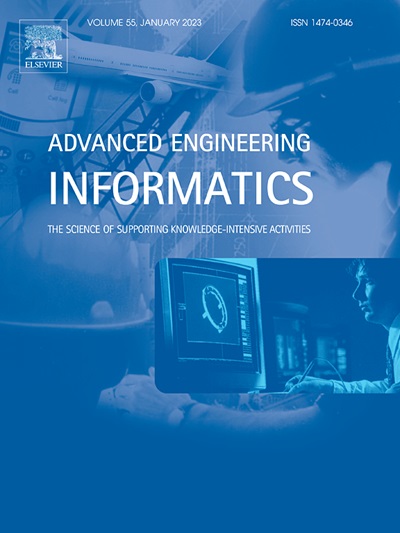Fault diagnosis of high-speed train suspension systems under variable speeds based on dynamic transfer loss weight-deep subdomain adaptation network
IF 8
1区 工程技术
Q1 COMPUTER SCIENCE, ARTIFICIAL INTELLIGENCE
引用次数: 0
Abstract
Fault diagnosis of suspension systems under variable speeds is crucial for the safe operation of high-speed trains. However, the machine learning-based fault diagnosis of suspension systems is hindered by the requirements for multiple sensors, supervised training, and reliance on expert experience for setting the transfer loss weight in domain adaptation methods. Using the wavelet packet energy method and the coefficient of variation, this study developed a sensitivity indicator for vibration signals at different locations to suspension components faults, and determined the center of the bogie frame as the optimal single sensor location. Based on the Euclidean distance between feature tensors output by the backbone network, an approach to dynamically update the transfer loss weight suitable for domain adaptation was proposed. A dynamic transfer loss weight-deep subdomain adaptation network (DTLW-DSAN) was constructed to dynamically adjust the network’s focus on source domain feature extraction and target domain adaptation, which can realize accurate and rapid network fitting. The proposed DTLW-DSAN achieved an average diagnosis accuracy of 93.09 % for the primary cylindrical spring, primary damper, and air spring of a high-speed train suspension system under wide-range speed variations (between 100, 200, and 300 km/h). The DTLW-DSAN’s generality was validated using the visual transfer learning public dataset Office-31.
求助全文
约1分钟内获得全文
求助全文
来源期刊

Advanced Engineering Informatics
工程技术-工程:综合
CiteScore
12.40
自引率
18.20%
发文量
292
审稿时长
45 days
期刊介绍:
Advanced Engineering Informatics is an international Journal that solicits research papers with an emphasis on 'knowledge' and 'engineering applications'. The Journal seeks original papers that report progress in applying methods of engineering informatics. These papers should have engineering relevance and help provide a scientific base for more reliable, spontaneous, and creative engineering decision-making. Additionally, papers should demonstrate the science of supporting knowledge-intensive engineering tasks and validate the generality, power, and scalability of new methods through rigorous evaluation, preferably both qualitatively and quantitatively. Abstracting and indexing for Advanced Engineering Informatics include Science Citation Index Expanded, Scopus and INSPEC.
 求助内容:
求助内容: 应助结果提醒方式:
应助结果提醒方式:


